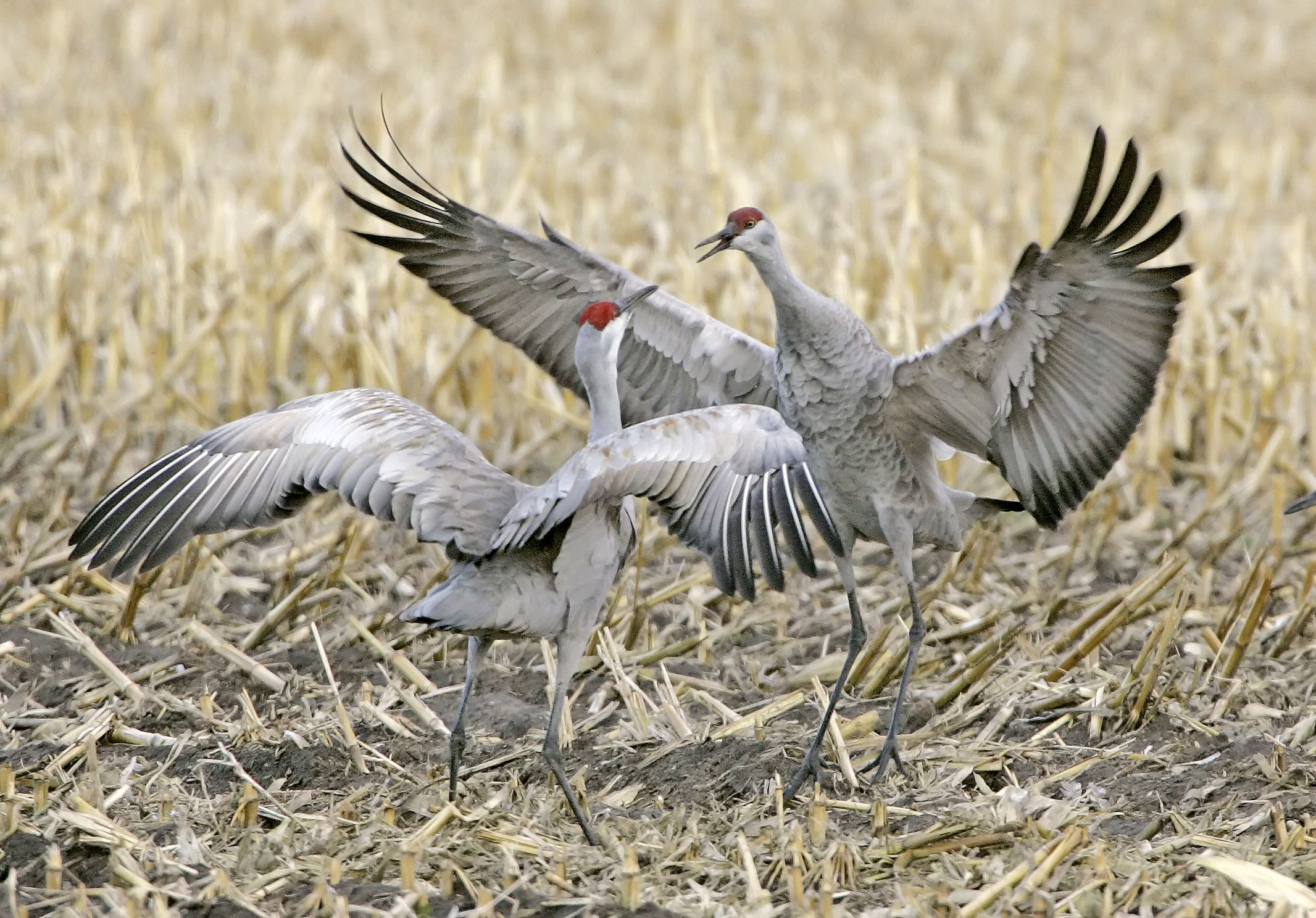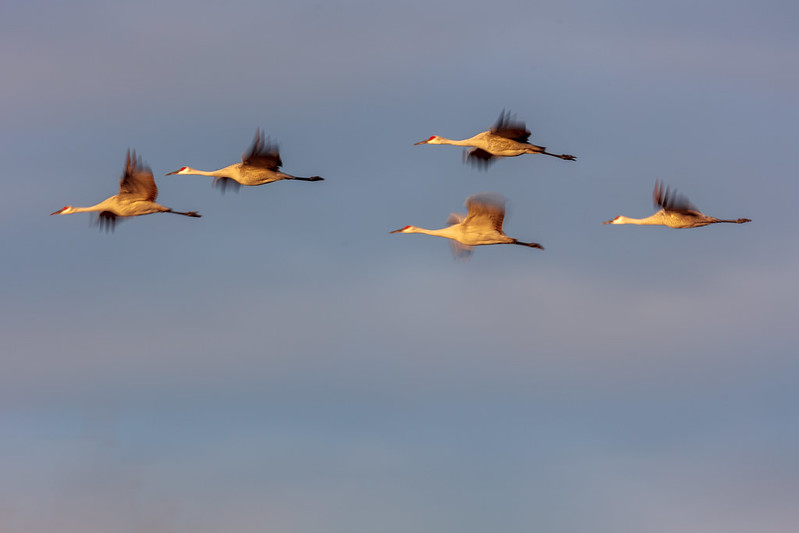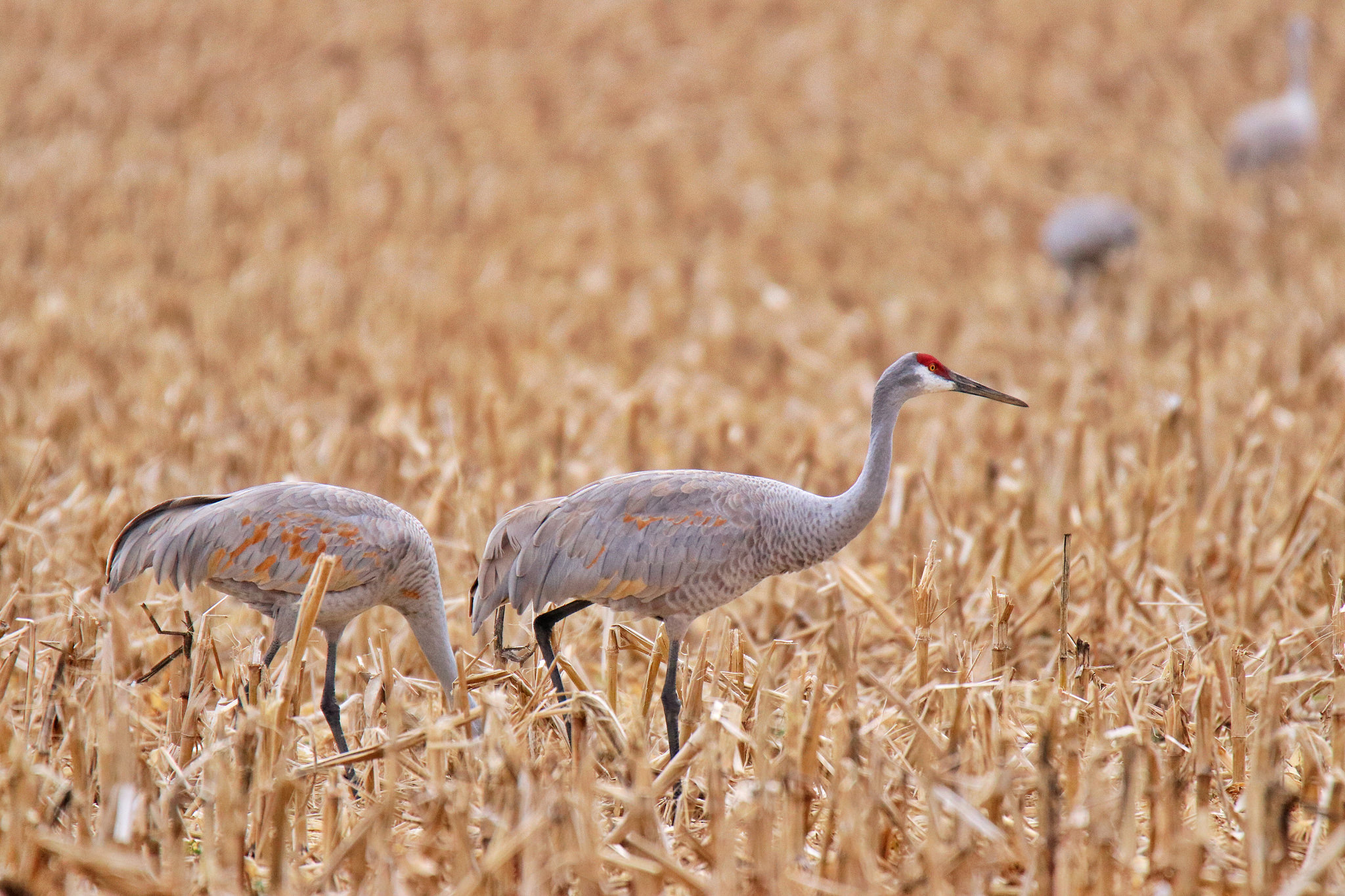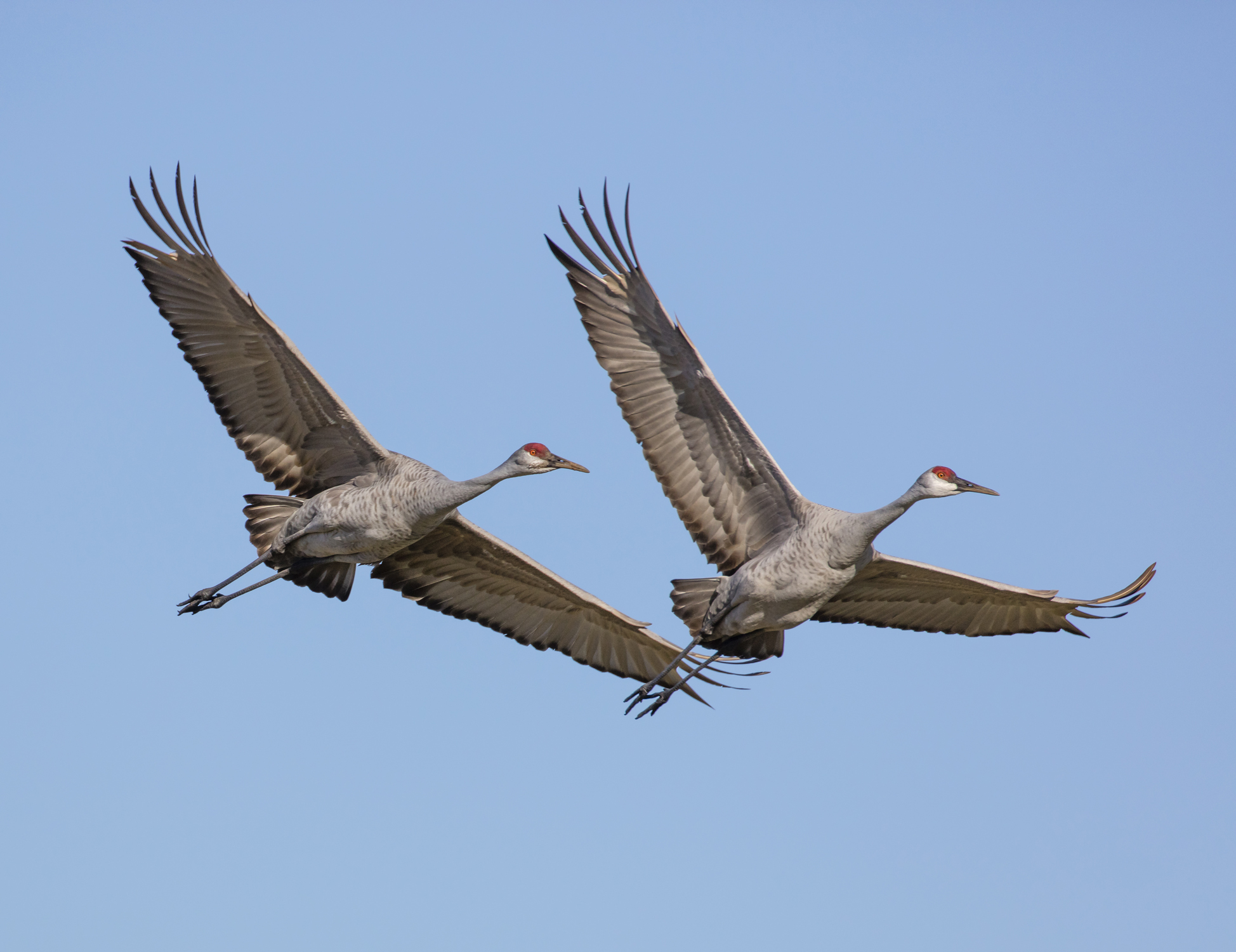This Saturday, thousands of volunteers around Wisconsin and the Midwest will head out early in the morning to local wetlands and birding hotspots to collect data about sandhill and whooping cranes as part of the Annual Midwest Crane Count.
The count is run by the International Crane Foundation, or ICF, which is headquartered in Baraboo and collaborates with conservationists around the world to protect cranes and the ecosystems they depend on.
Ryan Michalesko, communications and advocacy specialist at the organization, said the crane count is an important citizen-science project to monitor the crane population in the state.
Stay informed on the latest news
Sign up for WPR’s email newsletter.
“It really does take a village, and this data is useful,” he said. “We’re able to use this data … to track trends in these populations, to track how threats like avian influenza might be affecting these populations.”
Paul Robbins, dean of the Nelson Institute for Environmental Studies at the University of Wisconsin-Madison and a former board member for the ICF, told WPR’s “Wisconsin Today” that counting cranes might seem like a simple task, but it’s the only way to get a snapshot of the population around the state.
“Conservation is really based on pretty small numbers of beings in the world, so you actually have to find them and see them,” he said. “And that really requires people to be on the ground.”
Robbins is a self-described crane enthusiast who has been following these birds around the world for most of his career. He called the return of the sandhill crane, which was nearing extinction at the start of the 20th century, a “modern miracle.”
“Since 1970, we’ve lost one-third of all bird life in North America. My 9-year-old son will grow up with a billion fewer birds in his world than I did growing up in the 1970s,” he said. “So to have the cranes come back like that … it is the greatest success story in the history of North American conservation, unquestionably.”
While the sandhill crane population is now flourishing, in large part because of conservation efforts here in the state, the whooping crane is still endangered. The ICF changed the name of the count from Sandhill Crane Count to Annual Midwest Crane Count in 2005 to start monitoring the whooping crane population and aid with reintroduction efforts.
“Cranes are beloved birds in Wisconsin. People really do love them,” Michalesko said. “We have volunteers all around the state and huge involvement just due to how cherished these birds are to the state’s natural history.”

Wisconsin counters bring years of experience, love of cranes
The crane count started in 1976 as a small-scale survey in Columbia County, located in southcentral Wisconsin. Robbins called it a “mom-and-pop operation” with about 200 volunteers.
Now, the count has expanded to six other states in the upper Midwest with more than 2,000 volunteers participating each year. In Wisconsin, more than 60 counties take part, each with their own coordinator who recruits volunteers, assigns them to specific count sites and compiles the data from the day.
Patty Keuck is the coordinator for Washington County and has been participating in the crane count since 1982. She told “Wisconsin Today” that even though it’s often cold, dark and rainy on the morning of the count, which runs from 5:30 to 7:30 a.m., she is drawn back every year because she finds the cranes majestic.
“They’re beautiful. They’re primordial — they take me back to a time without people,” she said. “Even if you can’t see them, you can hear them and you know you’re in the presence of something magical.”

For Roy Franzen, who served as the county coordinator in Sauk County for 23 years, the best part of the crane count was interacting with the volunteers. He looks back fondly on the days of using paper maps and data sheets for the crane count before “everything went digital.” On count day, he used to meet with volunteers at a restaurant afterward to collect their tally sheets and swap stories about how the morning went.
“It was enjoyable socializing with these people, talking to them maybe once a year, twice a year. It was fun,” he said.
While the event draws a lot of birders, anyone can participate — as long as you’re willing to be an early bird for the day to start the count before dawn. For Robbins, that’s the beauty of citizen science.
“A biologist … can’t be everywhere at once. But everybody is everywhere at once,” Robbins said. “As long as you open your eyes and your ears, you can count cranes, and that’s a magically useful number.”
Keuck said she loves the call of the cranes and often hears them before she sees them.
“You can hear them calling together — ‘Oh, there’s a mating pair’ — even if you can’t see them,” she said. “And that counts as an observation.”
Keuck looks forward to the cranes returning every year for spring migration.
“In Wisconsin, we are so privileged. We have the most habitats and the most cranes,” she said. “It’s just a privilege to see them and to know that we’re doing something to help them survive.”
Learn more at SavingCranes.org.
Wisconsin Public Radio, © Copyright 2025, Board of Regents of the University of Wisconsin System and Wisconsin Educational Communications Board.




